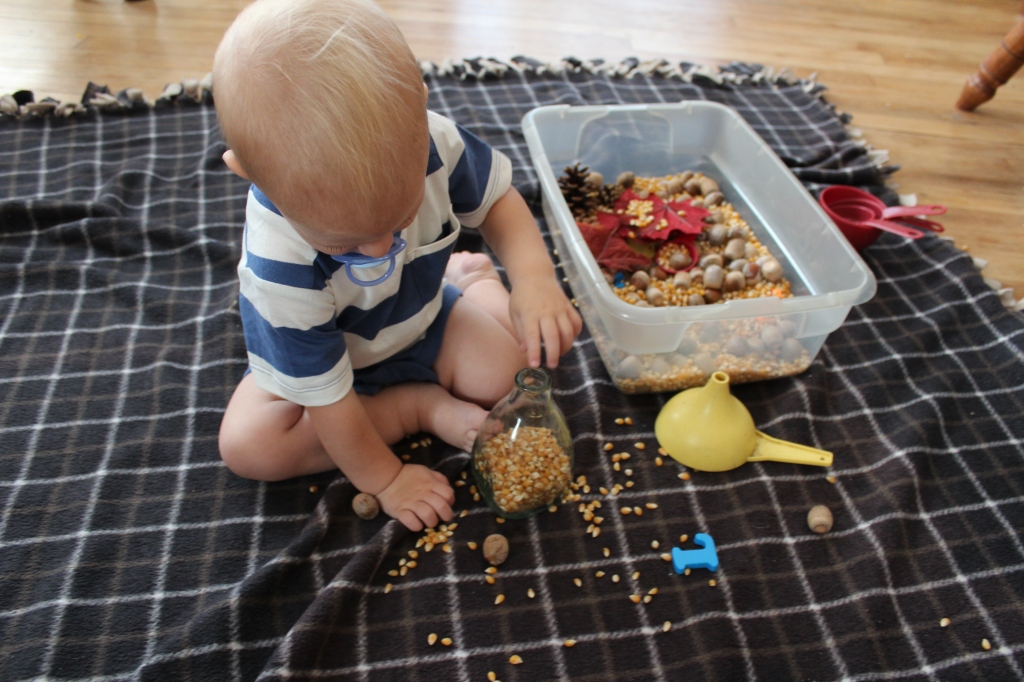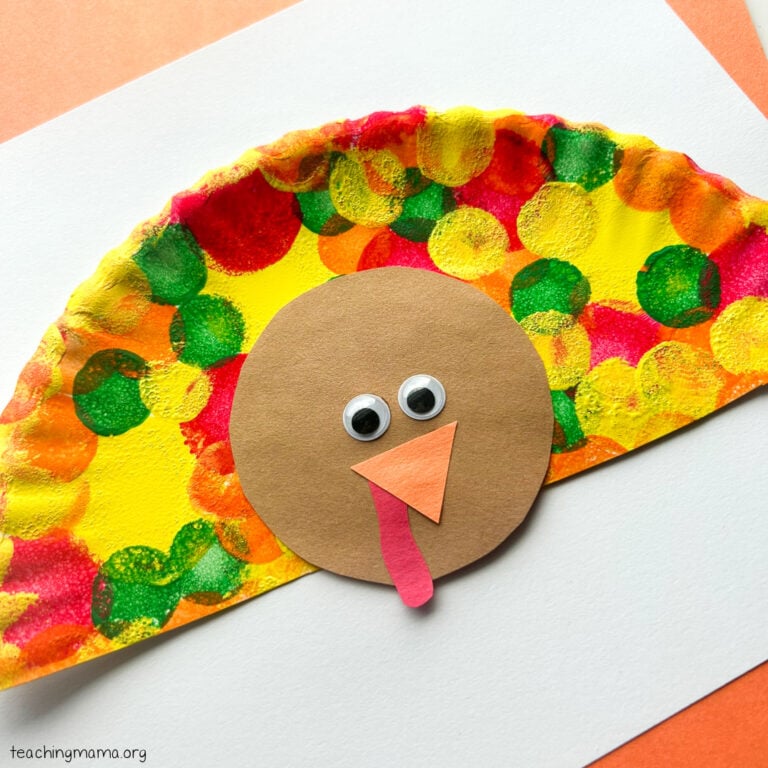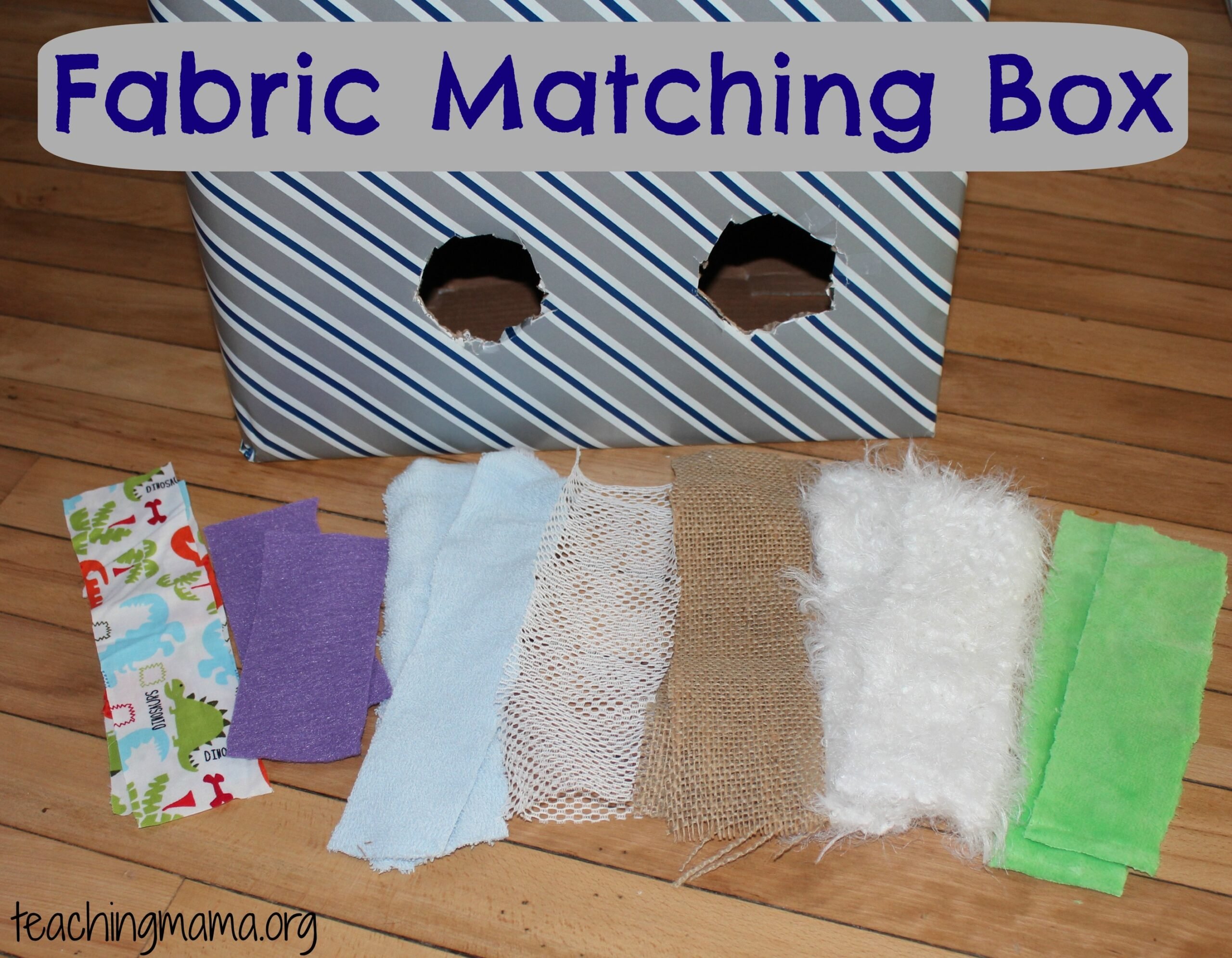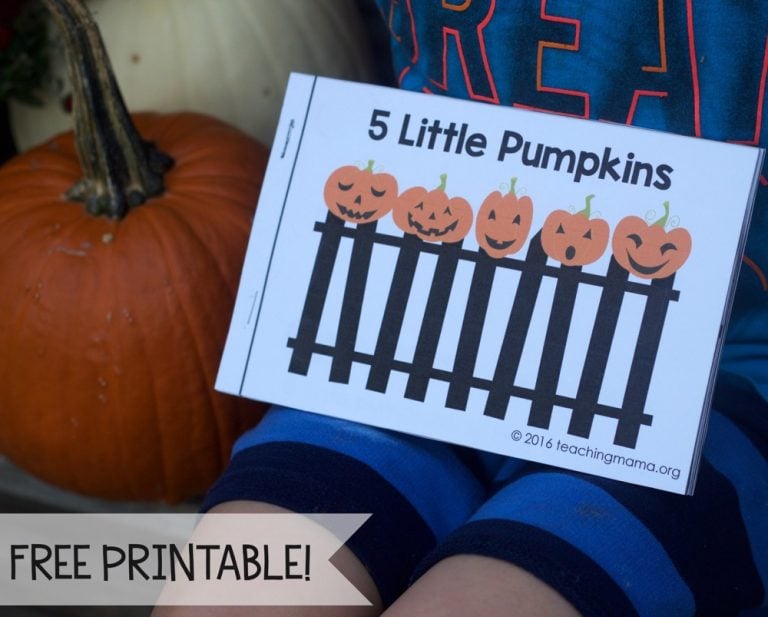Leaf Sensory Bin
If you are looking for a great sensory bin for autumn, this leaf sensory bin is for you! This is a great way to engage the senses and add in elements of fall into your classroom!

Leaf Sensory Bin Materials
The materials I used to make the leaf sensory bin are the following:
- acorns
- pine cones
- popcorn kernels
- faux leaves (or you could have real ones)
- plastic bin
Set the materials inside of the plastic bin so it’s inviting and welcoming to children.

How to Use a Sensory Bin
Once you have the bin set up, add in materials for the children to play with. This could be cups, funnels, tongs, and spoons. Basically, this is just to encourage play. It is amazing to watch children play with the bin, even when you don’t give them explicit instructions on what to do.
My preschooler really loved this one. We talked about the shapes and how everything feels. We also talked about different attributes of the materials: sharp, smooth, bumpy.
I also shared with him how an acorn seed can turn into a tree! I think he was amazed and slightly confused.

My boys had a blast putting the seeds into a funnel that led into a vase. This is a fabulous way to work on fine motor skills! I always recommend putting a blanket down to catch any kernels or acorns that don’t make it in the bin.

My little guy was very focused on putting those seeds in the vase.

This bin was fun (and messy) but I love having activities for my kids that are hands-on and entertaining!
Educational Benefits
Sensory bins stimulate a child’s senses—touch, sight, sound, smell, and sometimes even taste. They offer numerous benefits for children’s development, including:
- Sensory Exploration: Sensory bins provide a safe and controlled environment for children to explore and experiment with different textures, materials, and sensory experiences. This hands-on exploration helps them understand the world around them.
- Sensory Stimulation: Sensory bins stimulate various senses, promoting sensory development. For this bin, they can feel popcorn kernels, acorns, and leaves, which offer tactile experiences.
- Fine Motor Skills: Manipulating objects within a sensory bin, such as picking up small items with fingers or using scoops and tweezers, helps children develop their fine motor skills. These skills are essential for tasks like writing, buttoning clothing, and tying shoelaces.
- Language and Communication: Sensory bins can encourage conversation and vocabulary development. As children describe what they see, touch, or feel, they expand their language skills. Additionally, adults can use sensory bins to introduce new words and concepts.
- Problem-Solving and Cognitive Skills: Children often engage in open-ended play with sensory bins, leading to opportunities for problem-solving and creative thinking. They may use the materials to build structures, sort items, or create imaginative scenarios, which stimulate cognitive development.
- Emotional Regulation: Sensory play can be calming and soothing for children. It provides an outlet for emotional expression and helps children regulate their feelings and reduce stress or anxiety.
- Social Development: Sensory bins can be used in group settings, promoting social interaction and cooperation. Children can share materials, take turns, and collaborate on imaginative play scenarios, which support their social development.
- Creativity and Imagination: Sensory bins encourage open-ended play, allowing children to use their creativity and imagination to invent stories, scenarios, and games with the materials provided.
- Independence: Sensory bins can be set up in a way that encourages independent play. This helps children develop a sense of autonomy and self-reliance as they explore and engage with the materials on their own.
Overall, sensory bins are amazing! They provide a versatile and engaging way for children to learn and develop various skills while having fun.
Frequently Asked Questions
If you have a child who likes to dump or throw materials, you will want to start small and with soft and bigger materials. I recommend using soft pom poms. Make sure to establish the rules of the sensory bin before giving it to kids. If they don’t follow the rules, then take the bin away and try it another day. It also might help if you are sitting by them and engaging with the child.
I like to pour everything into a gallon-size bag and store it away. It can last for years!
Make sure you use this bin with children who don’t put things in their mouths! As you can see in the pictures above, my children were quite young when I introduced this to them. I would recommend this for ages 3-5, but please use your discretion with this activity.
I hope this post inspires you to create your own leaf sensory bin!






I was just wondering how you stop your children from putting the corn kernels in their mouths? I teach two – three year olds and I would be worried that a couple of them might do that and they could choke. I really want to do sensory bins but I need to make sure they are absolutely safe!
Good question! I actually didn’t have an issue because my kids didn’t put things in their mouths very often. I did watch them closely though to make sure. Since you teach 2 and 3-year-olds, I would stay away from corn kernels or anything else they could potentially choke on. I know that makes it more difficult! I would try cooked noodles, cloud dough, water, sand, cornmeal, or even Jell-O. Hope that helps!
I want to print this out so i can give it to my grandsons teachers how do i do that email me please [email protected] thank you!
You’ll have to just click ‘file’ and then ‘print’.
What a neat activity!!!